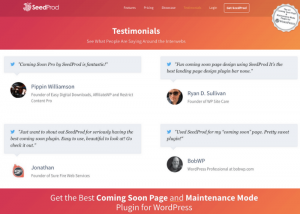The ball dropped and like that, we’re in a new decade! Each new year comes with new goals. I’m not only talking about losing the 5 extra pounds we gained from eating all those Christmas cookies. And, I’m not referring to the resolution you made about watching just a little less Netflix this year. Those are good and all, but instead, let’s talk about goals and projects for your call center.
Now that we’re back to work after the holidays, it’s time to kick things into high gear and reflect on where your call center performance could have been a bit better in 2019. Don’t feel overwhelmed. You’ve got a whole year ahead to grow, push your employees, and build a stronger call center.
Where to start? As a call center manager, your focus should live in two places — with your agents and your customers. Let’s look at how you can take on projects in 2020 that benefit both. That’s right, I said both!
Here are four projects for the year that will build up both your customer and agent experience.
4 Call Center Projects to Boost CX and AX in the New Year
1. Create a customer feedback loop that works in real-time
How do you know if you’re delivering a good experience to your customers? You have to ask them, of course.
Getting honest feedback is tricky. Plenty of customers will be more than happy to tell your frontline agents what they think of your service. But, if you’re not delivering a good customer experience, some angry customers slip beneath your radar. You’ll only notice their anger when customers quietly end their contracts and don’t renew. Or, when they ignore marketing outreach more and more. Maybe even, when reviews about your poor CX suddenly plague the internet.
The best way to avoid these scenarios is to create a feedback loop that gathers real-time feedback from customers. Use tactical methods to include surveys and ask open-ended questions, gathering analytics and feedback that help you know your customers’ needs. Send surveys via email to your customers after each interaction, or add a banner at the bottom of each email your agents’ send. Even include a feedback form in your help center. Getting immediate reactions to your service will boost your CX and AX.
How?
Customer Experience Benefit:
You find out in real-time the pain points your customers’ experience. And then, you and your team can act on them in-the-moment. If you use customer feedback to grow, your customers will notice the difference in your service. They’ll feel heard, appreciated, and better served the more you take their thoughts into account.
Agent Experience Benefit:
What better way for your agents to grow than for them to know what they excel in and what they need to work on? When your agents get feedback, they grow in professional skills and the job only gets easier.
2. Customize your reports to get the best read on your KPIs
Data data data. This seemed to be an all too familiar word in 2019. Everyone is vying for more data, bigger data, better data on their customers. Data is a powerful tool that, when used responsibly, can provide the best care to both your customers and your agents.
Your contact center platform holds the record of hundreds of customer interactions. That’s hundreds or even thousands of data points to boost up your customer and agent experience. But making sense of endless cells of data and all your KPIs can be hard without the right visuals and comparisons. Take some time vamping up your reporting dashboards. Customize them to track the metrics you care about most. Want to color coordinate? Or compare Average Handle Time with your Customer Satisfaction Score? Choose the metrics that matter to your team, and compare them side by side.
Use colors like red, yellow, and green to show where you stand with your most important metrics.That way you, your ops leaders, and your agents have quick visual cues to gain insights on what’s happening in the contact center. Then, you can gain the best insights on all the data you’re pulling in.
Customer Experience Benefit:
Your customers may not fully grasp how their data is helping you, but if you use it well, they’ll notice the difference. When you paint a visual picture with your reports, you can make actionable choices to deliver better experiences to your customers. Metrics help you form a narrative so you see the pain points your customers are faced with, and then come up with a game plan to fix them. While they’re not going to fully grasp the importance of their single interactions, they should notice a difference in their experience.
Agent Experience Benefit:
Focus on the right KPIs to build up your employees in a way that benefits them as well as your customers. Metrics like Training Investment per Agent and your Rate of Escalation help you track whether your agents feel empowered to do their work. Do they feel like they can handle situations without a manager and with their own training? When you organize and use your reporting tools effectively, and act on them, your agents will be more prepared to take on each day.
3. Set up self-service tools
Americans are known for their “pick yourself up by the bootstraps” mentality, right? Even as customers, we like to think we know the answers to our own problems. Or, at least that we can find them on our own. Customer experience trends are taking advantage of this as self-service tools become more prominent. Salesforce reported that 60% of businesses expect to implement self-service portals in the next year.
A self-service portal is just one of the ways to offer self-help tools for your customers. Typically accessible through your company website, these tools take the form of knowledge bases, feedback forms, collaborative forums, service request forms, and automated web chats. Self-service tools are your new front line of support, there to resolve the common questions or issues your customers may face.
If you don’t already have self-service tools available, this call center project should take high priority. The benefits are many — whether it’s teaching your customers new skills, boosting your site traffic, or cultivating a customer community.
Customer Experience Benefit:
Your customers will thank you for this one. First, it saves them time and energy from having to reach out to you for their simple problems. In having resources available to them, you empower your customers to solve the problem themselves (and learn more about your product or service in the process).
Part of assisting the customer is not just about solving their problem there and then. It’s about giving them the proactive tools they need to solve their own problems in the future. Self-service does this beautifully.
Agent Experience Benefit:
When your customers aren’t reaching out with tedious common questions, your agents have more time and space to serve and problem solve on the really tough cases. Your agents will have more opportunities to grow and tackle problems and be even more productive. With fewer calls and support tickets, agents fielding inquiries can spend more time with each customer – the ones that really need them.
4. Assess your best customer communication channels
Omnichannel communication within contact center platforms is only becoming more and more important for customer service today. Customers want to reach you using the channel they prefer. In fact, 9 out of 10 consumers want an omnichannel experience with seamless service between communication channels. And, your strategy needs to support their preference every step of the way to provide a good experience.
Think of IKEA as a model of this. No matter where you are in the world, you’ll get the same experience at any IKEA store. Order through the app, try out their home delivery service, or go to the store (and score some Swedish meatballs and free coffee), and you’ll get the same level of care.
Customers enjoy themselves more when they see that no matter who they talk to, and no matter which channel they use, every agent knows the context of their issue and can answer them with consistency.
Use customer data and establish which channels your customers prefer. That way you have a foundation for an omnichannel strategy you can pass off to your vendor, so they can get the right channels up and running to help you succeed.
Customer Experience Benefit:
Customers today want the freedom to choose how they reach you. They want to know they can hand out their information once, and you’ll use it to give them a good experience. They want their questions answered fast and seamlessly. When you make the interactions you have with your customers smooth and thoughtful, your customers will leave feeling cared for.
Agent Experience Benefit:
No call center agent wants to be handed a customer’s problem without any context. And no agent wants to start an interaction with a customer who’s already tired of waiting for resolution. When you smooth out the channel-to-channel experience, your agents will be better prepared to resolve issues. Relieve stress for both agents and customers by creating a strong omnichannel experience.
No Better Time for Better Customer Experience
Customer experience will only continue to drive revenue growth in 2020. In fact, when Econsultancy and Adobe conducted their Annual Digital Trends report, they asked B2B companies to state the single most exciting opportunity for 2020. Customer experience came in first at 20%, 10-15% more than other marketing and social media efforts! The time is now to buckle down and work on the projects that will service your customers most this year.
Business & Finance Articles on Business 2 Community
(28)
Report Post





